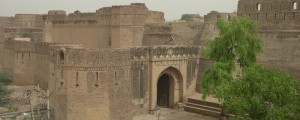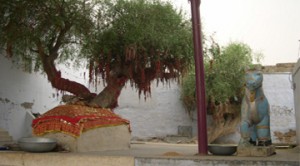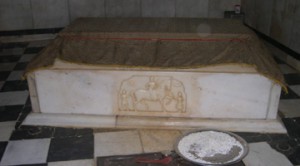Tourist Attraction of Hanumangarh
Hanumangarh is a small town nestling on the bank of the river Ghaggar in northern Rajasthan India. Hanumangarh travel will take you to its magnificent charms of colossal Hanumangarh fort (Bhatner) and Temples, Ganganagar and kalibangan the credit of construction goes to Akshay Rao Bhatti. The Fort is the chief attraction of the district and is of great historical value. It was ruled by Bhati Rajputs for a long period and for a short spell was under the Turk Timur the lame, who wrote in his autobiography Tuzuk-i-Timuri, that he had not seen a stronger and more fortified citadel in the whole of India. It was in 1527-the fourth ruler of Bikaner Maharaja Jait Singh annexed the fort & it became part of the Bikaner Empire. After passing hands many times between mughals & kingdom of Bikaner, it was captured in 1805 Findlay.
Bhatner Fort
The fort of Bhatner is situated at a distance of 5 kms for the Junction Railway Station of Hanumaangarh. Traditions ascribe the buying of foundation of this fort by Changej Khan, but it is probable that sardar Jajaluddin have built this fort. The area surrounding the fort which now forms an integral part of the Ganganagar District was an independent colony under the name of Bhattinagar.
This fort was regarded as one of the most important strongholds of the country. The fort had attained great historical celebrity from its position, being in the route of invasion from the central Asia to India. During the medieval time this great fort provided surest means of defense and proved as a strong bulwark against enemy attack.

A short distance away from the fort is the Kalibangan Archaeological Museum which would be of great interest to the historically minded. Kalibangan as mentioned earlier was the site where the an ancient civilisation almost as old as Harappa and Mohenjodaro civilisations flourished.
Kalibangan is located on the left bank of the Ghaggar ( Ancient Saraswati) river, Usually dry but occasionally flooded, at a distance of about 5 kms. from Pilibanga Railway Station.
Goga Ji Temple – Gogamari
At a distance of about 120 km from the city of Hanumangarh and two kilometres from the railway station of Gogamedi, the temple of Shri Gogaji is located. This temple is presided over by Gugga Jahar Peer who is more popularly known as Shri Gogaji. This spiritual guru was born in the Rajput dynasty of Chauhans in Dadrewa village of the Churu Distict, approximately 900 years ago. Shri Gogaji was once a warrior who possessed spiritual powers. It is said that this temple was constructed around 950 years ago and it was Bikaner’s Maharaj Shri Ganga Singh, who reconstructed this temple again in 1911.
The structure of the temple stands upon an elevated mound and is made of stone, lime, black and white marble and mortar. The architecture of this temple reflects a perfect blend of Muslim and Hindu styles.Inside, a statue of Shri Gogaji is set up that has a lot of engravings on it. This statue depicts Shri Gogaji as a warrior mounted upon a horse, having a lance in his hand and a snake encircling his neck. People from all communities visit this temple, which is open every day.The major festival in this temple is Gogameri, when pilgrims from all parts of the country worship Gogaji or ‘the God of Snakes’. The unique feature of this temple is that it has priests for both Hindus and Muslims.
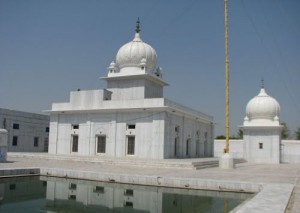
Shri Kabootar Sahib Gurdwara is located at a distance of about 80 km in the town of Nohar. This temple was constructed to celebrate the historic visit of Guru Gobind Singh in the month of November,, 1706, who was the Tenth Guru of the Sikhs and the founder of Khalsa Panth. On the way from Sirsa, Guru Gobind Singh stopped at this spot and set up camps close to a Chhip Talai that was situated southeastwards of the town.
When Guruji visited this place various pigeons or ‘kabooter’ as called in Punjabi used to assemble. This happened as lots of people in this area used to feed these pigeons. During Guruji’s stay in this place, one of his Sikh followers accidentally stepped on a pigeon injuring it. Since the people of this area practiced non-violence, they protested this act with anger. To pacify the local residents, Guruji appointed a barber-cum-surgeon who treated the pigeon. After this, news spread that Guruji had brought a dead pigeon back to life with the help of his spiritual powers. Then the family of the barber founded a platform at the campsite on which this gurdwara was built later on, around 1730.
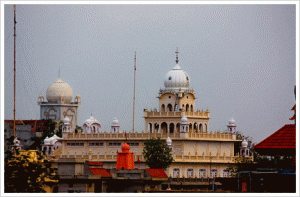
this temple is built in the period of Maharaja Ganga Singh Ji. This temple is dedicated to goddess Bhadrakali. Here every year a mela is organized on Chaitra and thousands of pilgrims especially visit this temple during these days.


